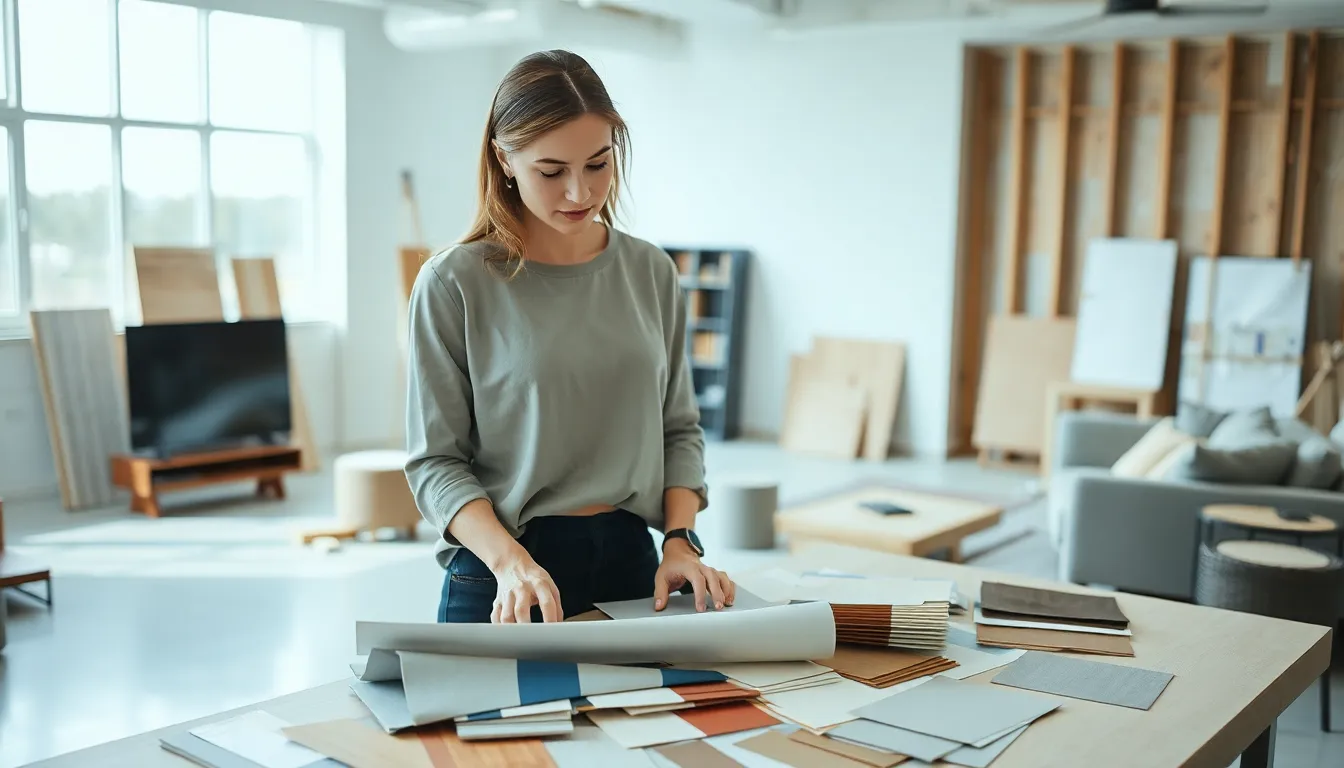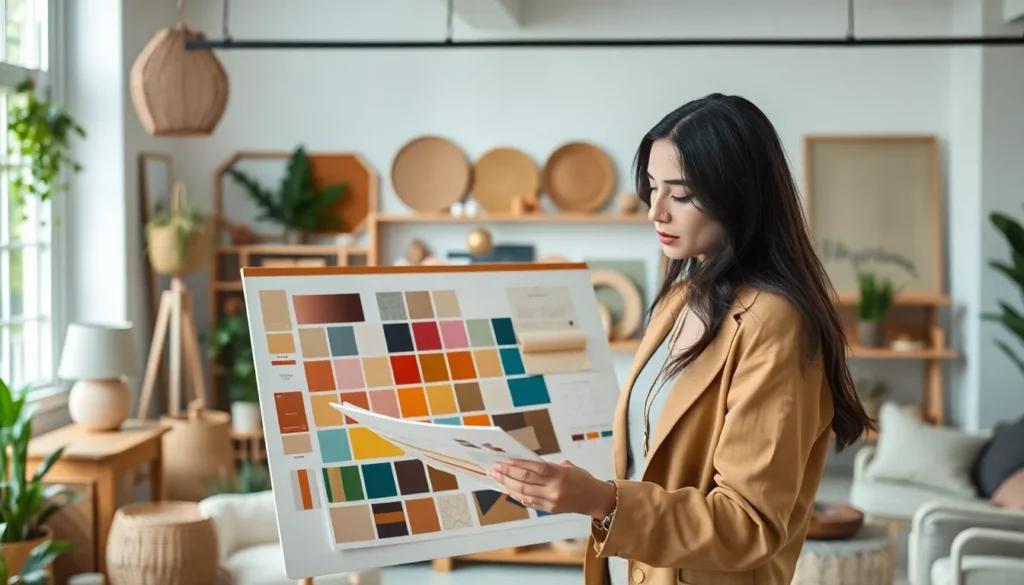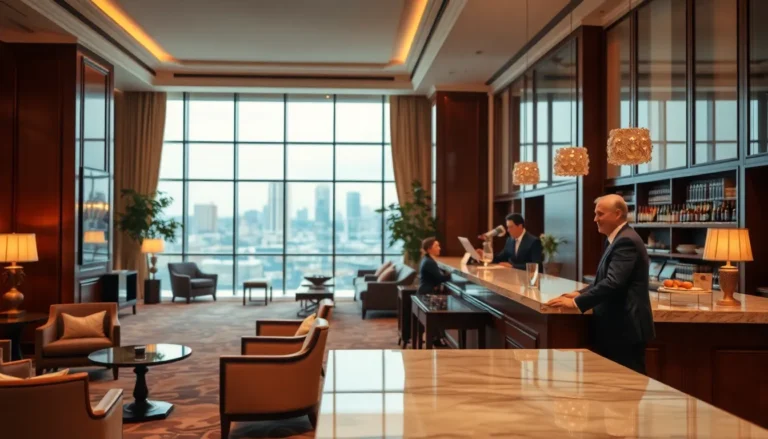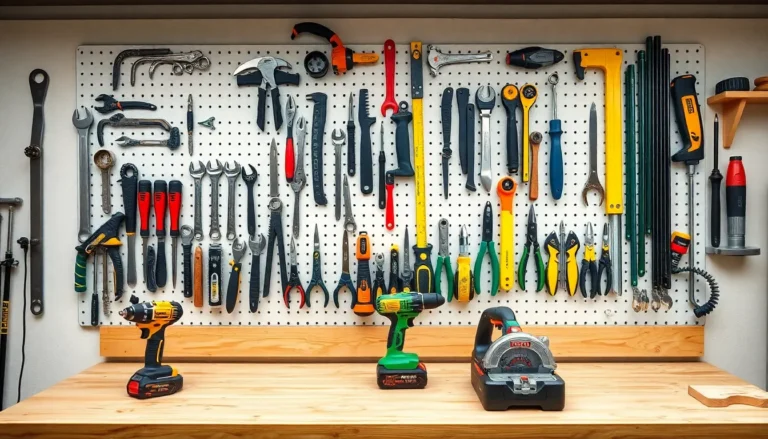In the world of decor design construction, the right choices can transform a drab space into a dazzling masterpiece. Imagine walking into a room that not only looks stunning but feels like a warm hug from your favorite blanket. That’s the magic of thoughtful design—where every color, texture, and layout works in harmony to create an inviting atmosphere.
Table of Contents
ToggleUnderstanding Decor Design Construction
Decor design construction plays a crucial role in creating aesthetically pleasing and functional spaces. Thoughtful design enhances environments, making them more enjoyable and inviting.
Definition and Importance
Decor design construction refers to the process of planning and executing interior and exterior design elements. It involves selecting materials, colors, furnishings, and layouts tailored to specific purposes. This attention to detail significantly impacts the ambiance. Environments transformed through effective decor design become more welcoming and reflective of individual personality or brand. Inspiring spaces encourage productivity and comfort, demonstrating that design choices contribute directly to emotional well-being.
Key Elements of Decor Design
Several key elements influence decor design effectiveness. Color choice sets the tone and mood of a space. Texture adds depth and interest, enhancing the sensory experience. Furniture arrangement dictates functionality and flow. Lighting selection impacts visibility and atmosphere, creating different moods throughout the day. Incorporating these elements with harmony fosters an inviting environment. Thoughtful patterns and decorative accents further elevate the design, allowing for personal expression within a cohesive framework.
The Process of Decor Design Construction

The decor design construction process involves several key stages that ensure spaces become both functional and visually appealing. Each step contributes to the overall success of the design.
Planning and Concept Development
Concept development begins with identifying the client’s needs. Designers gather input on desired themes. Brainstorming sessions often lead to mood boards that visualize color palettes and textures. Additionally, designers create layouts for furniture placement and traffic flow. By using CAD software, layouts can be adjusted in real time. Feedback from stakeholders ensures alignment with visions and preferences. Ultimately, careful planning sets the foundation for an effective design.
Material Selection and Sourcing
Material selection plays a crucial role in decor design. Designers assess functionality as well as aesthetics when choosing materials. Popular options include natural fibers, engineered woods, and metal accents. Sourcing involves establishing relationships with suppliers. Engaging with local artisans can also enhance uniqueness. Within budget constraints, designers balance quality and affordability, ensuring projects are economically feasible. Availability of materials influences timelines, making early decisions advantageous. Choosing the right materials leads to a cohesive design that meets both style and practical needs.
Trends in Decor Design Construction
Innovative trends in decor design construction continue to reshape spaces. Emphasizing sustainability and technology, designers strive to create functional and aesthetically pleasing environments.
Sustainable Practices
Sustainable practices gain momentum in decor design construction. Designers prioritize eco-friendly materials and energy-efficient solutions, reducing environmental impact. Bamboo, reclaimed wood, and recycled metals become popular choices, enhancing sustainability without compromising style. Incorporating natural light also boosts energy efficiency while creating inviting atmospheres. Many designers implement indoor plants to improve air quality and foster biophilic connections. Sourcing local materials further supports communities and minimizes carbon footprints. Overall, embracing sustainability shapes a new standard for creating beautiful spaces.
Technology Integration
Technology integration transforms decor design construction in significant ways. Designers leverage advanced software for layout planning and visualization, streamlining the design process. Virtual reality tools allow clients to immerse themselves in spaces before finalizing decisions, enhancing collaboration. Smart home systems increase functionality and convenience, integrating lighting, heating, and security features seamlessly. Such technologies also facilitate better energy management, appealing to environmentally conscious clients. As technology advances, it continues to redefine how spaces are designed and experienced.
Challenges in Decor Design Construction
Decor design construction faces various challenges that impact overall project success. Budget constraints and project management issues stand out as significant obstacles.
Budget Constraints
Budget constraints often limit designers’ ability to achieve desired aesthetics. Limited funds restrict material selection and design choices, pushing designers to find creative solutions. Maintaining quality while adhering to a budget requires precise planning and prioritization. Designers frequently need to balance luxurious elements with cost-effective options to meet client expectations. Making informed decisions about high-impact items, such as furnishings and finishes, significantly affects the final outcome. Strategies like phased implementation and sourcing alternative materials can help manage costs effectively.
Project Management Issues
Project management issues can derail the best-laid design plans. Coordinating various stakeholders often leads to communication breakdowns and misaligned expectations. Timely delivery of materials is crucial, yet delays can disrupt project timelines. Effective scheduling ensures that tasks occur in a logical sequence, minimizing downtime and stress. Designers must also manage contractors and subcontractors to ensure quality and adherence to design specifications. Implementing clear timelines and maintaining open communication facilitates smoother project execution and aligns everyone toward the same goals.
Thoughtful decor design construction plays a vital role in creating spaces that resonate with warmth and personality. By focusing on harmonious color choices, texture, and layout, designers can craft environments that not only look stunning but also enhance emotional well-being.
As trends shift towards sustainability and technology, the integration of eco-friendly materials and smart solutions becomes increasingly important. Navigating challenges like budget constraints and project management requires creativity and effective communication among all stakeholders.
Ultimately, successful decor design construction transforms ordinary spaces into extraordinary experiences, making them inviting and reflective of individual style.






